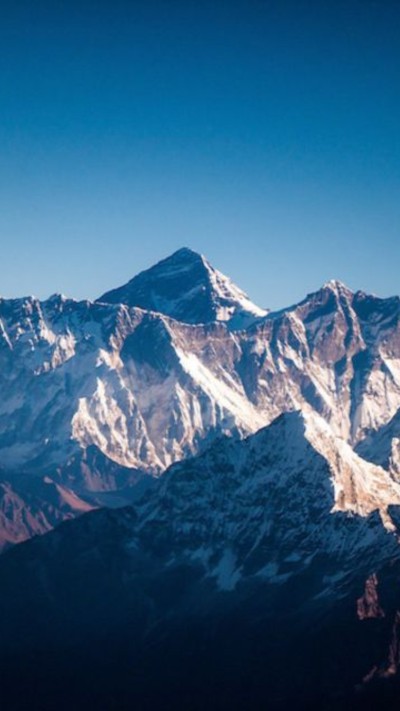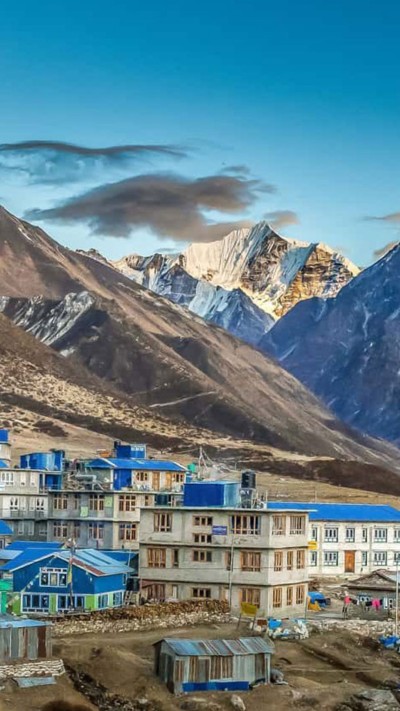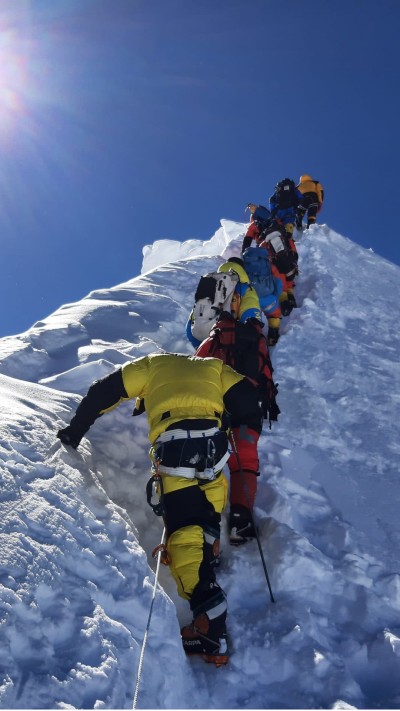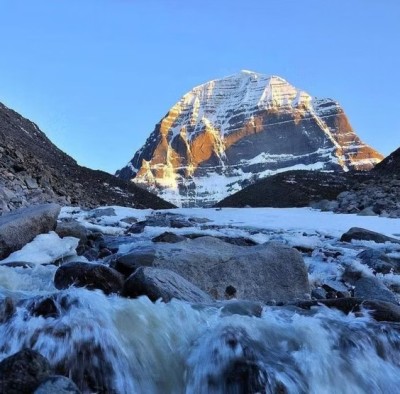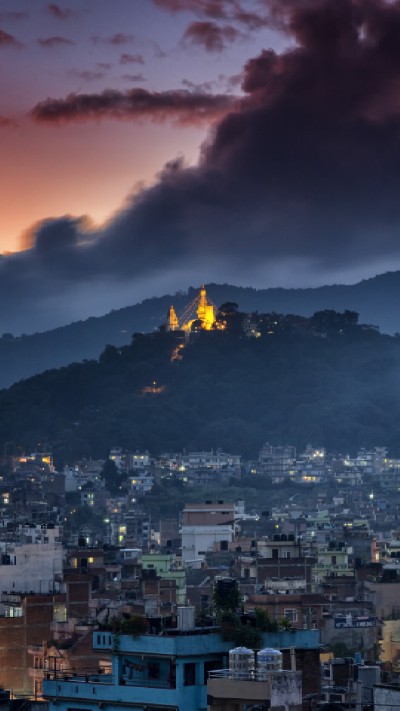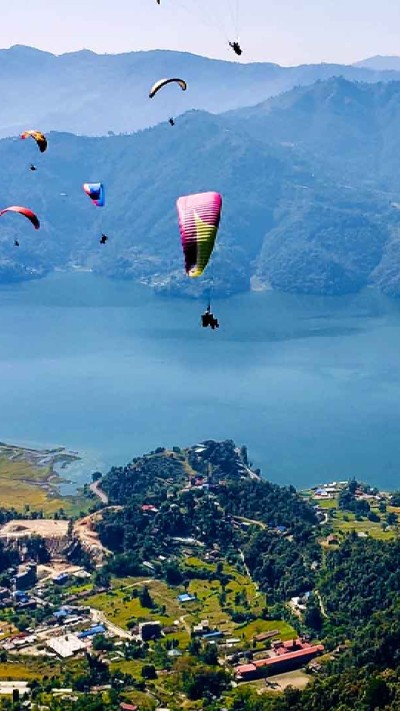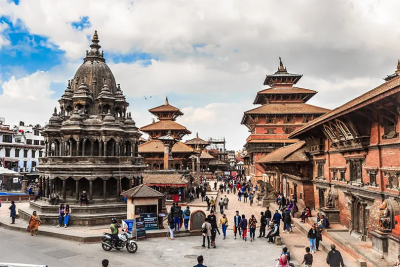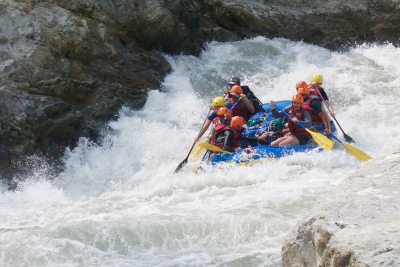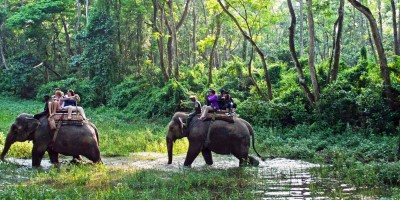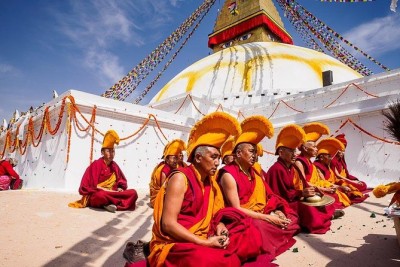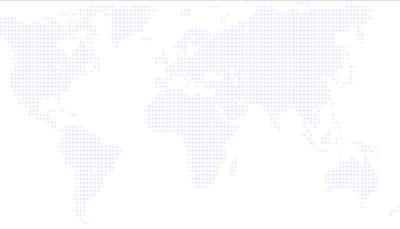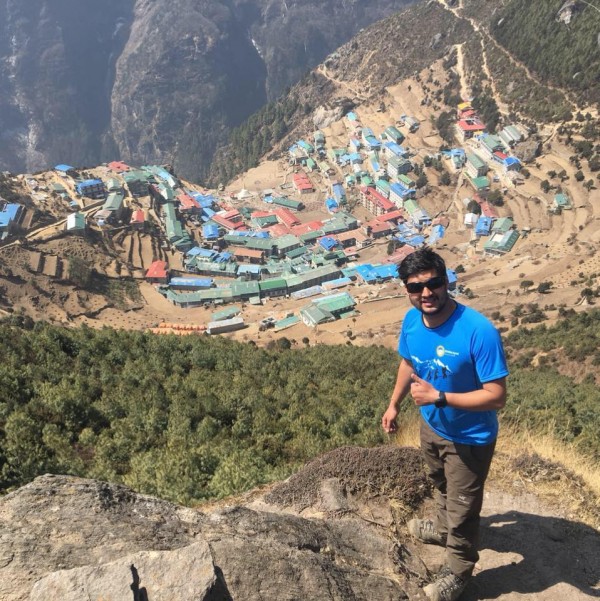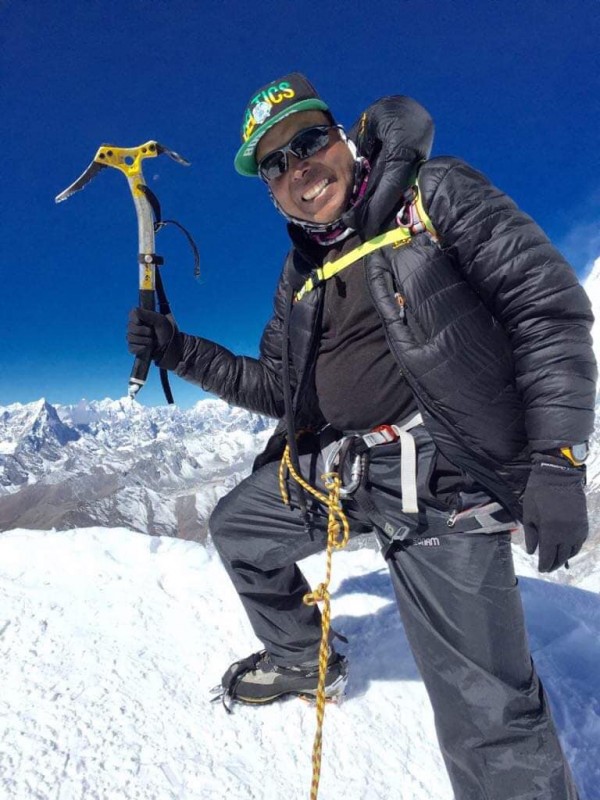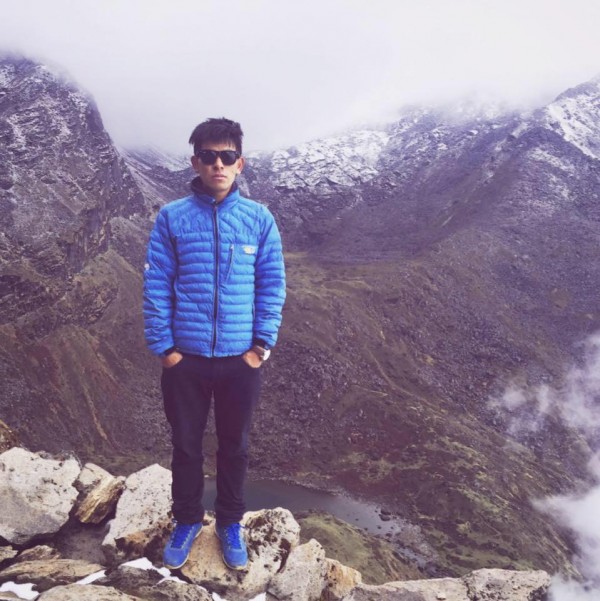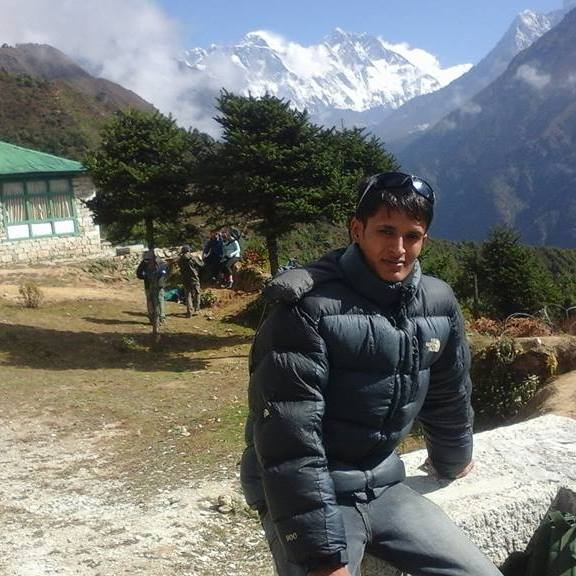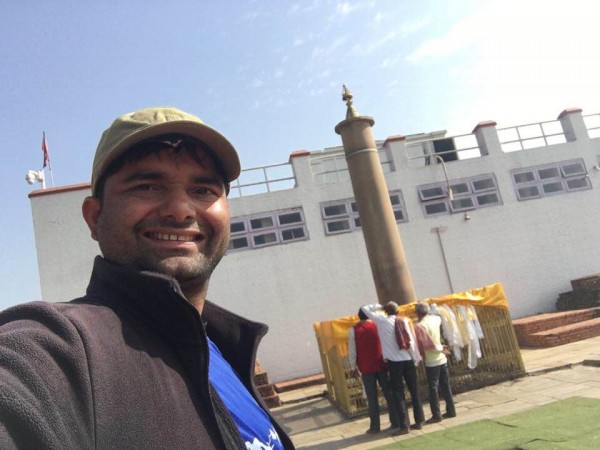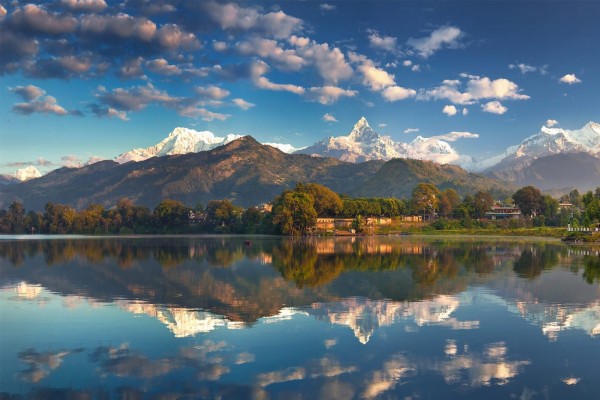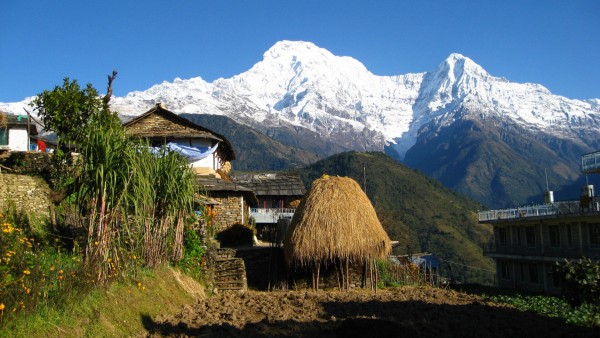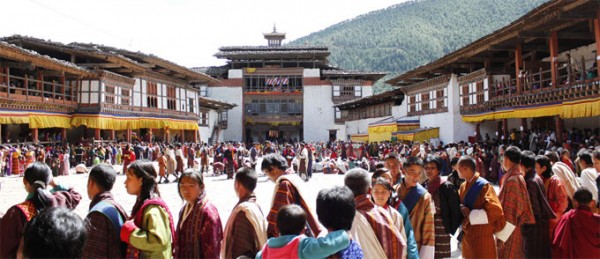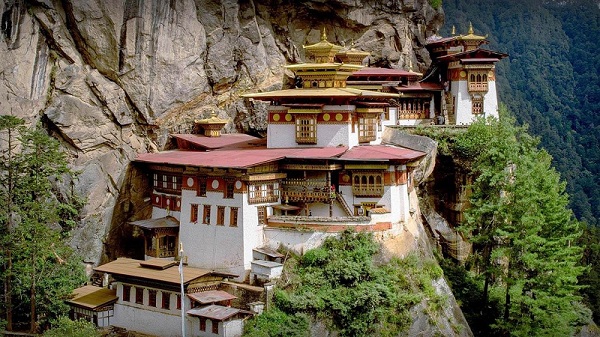Annapurna Circuit Trek
Region
Annapurna Region
Duration
12 Days
Max Altitude
5,416 m
Best Season
March–May & September–November
Activity Per Day
4‑7 hrs trekking/driving
Transportation
Tourist Bus/Jeep & Optional Flight
Grade
Moderate to Challenging
Min Group Size
2 people
Embark on the classic Annapurna Circuit Trek, a 14‑day journey encircling the Annapurna massif. This trek traverses lush terraced farmland, deep gorges, alpine forests, and high‑altitude deserts, culminating at Thorong La Pass (5,416 m). Along the way you’ll encounter Gurung, Manangi, and Thakali villages, observe diverse flora and fauna, and witness some of the most spectacular mountain vistas in Nepal.
Highlights
- Cross the iconic Thorong La Pass at 5,416 m for panoramic views of Annapurna, Dhaulagiri and beyond
- Trek through diverse landscapes, from subtropical valleys to high‑altitude deserts
- Visit charming villages like Dharapani, Chame, Pisang, Manang, Muktinath and Jomsom
- Experience the spiritual atmosphere at Muktinath Temple, sacred to Hindus and Buddhists
- Relax in the natural hot springs at Tatopani
- Optional side hikes to Ice Lake or Tilicho Lake for acclimatization and extra adventure
- Enjoy warm hospitality, hearty meals and cozy teahouse lodges throughout the trek
Outline Itinerary ( 12 Days )
-
1
Arrival Day
Max. Altitude: Kathmandu (1,400 m)Upon your arrival in Kathmandu, our representative will meet you at Tribhuvan International Airport, extend a warm welcome, and transfer to your hotel. Take advantage of this day to adjust to the new time zone and immerse yourself in the lively atmosphere of Kathmandu. Orientation Program will be at 5 PM. After orientation program welcome Dinner with guide.
Himalayan Suite HotelDinner -
2
Full Day Sightseeing tour of Kathmandu Valley
Max. Altitude: KathmanduDuration: 4-5 hrsDrive west from Kathmandu to Besisahar (6‑7 hrs) and continue by local jeep along the Marsyangdi valley to Dharapani. The road winds through terraced hillsides and rural villages.
Himalayan Suite HotelBreakfast -
3
Day 1 – Drive Kathmandu to Dharapani (1,960 m)
Max. Altitude: 1,960 m (Dharapani)Following a hearty breakfast, we will proceed to Dharapani (1960 m). The journey is characterized by stunning vistas of mountains, rivers, and verdant forests. As we travel, we will pass through fields of paddy and muddy terrain, taking in the scenic beauty of green hills, snow-capped peaks, and picturesque waterfalls along the route.
Teahouse in DharapaniBreakfast, Lunch & Dinner -
4
Dharapani to Chame
Max. Altitude: Chame (2,670 m)Duration: 6 hrsBeginning our journey from Dharapani, we will make our way to Chame, the administrative center of Manang. Along the route, we will pass through Danaque and tackle a steep climb that will bring us to Timang, located at the foothills of Lamjung Himal.
Guest HouseBreakfast -
5
Chame to Upper Pisang
Max. Altitude: Upper Pisang (3,300 m)Duration: 6 hrsToday, after a warm breakfast, we will head towards Upper Pisang. We pass through a fir and pine forest, climb a high and rocky area. We will follow a trail to steep trail to Bhratang. After walking for a few hours, we will come up to a beautiful valley with a great view of Annapurna II as well as Pisang Peak.
Guest HouseBreakfast -
6
Upper Pisang to Manang
Max. Altitude: Manang (3,540 m)Duration: 6 hrsToday, we will ascend a steep ridge to reach the Manang Valley via the upper trail through Nawal Village. From this vantage point, you will be rewarded with spectacular views of the Manang Valley and Tilicho Lake. We will then descend to Hungde, where the airstrip offers a stunning panorama of Annapurna III. Additionally, from the expansive plains of Sabje Khola, we will enjoy a striking view of Annapurna IV.
Guest HouseBreakfast -
7
Acclimatization Day in Manang
Max. Altitude: Manang (3,540 m)Duration: 6 hrsAcclimatization day. Today we spend a day acclimatizing in Manang. The whole day we spend by doing some fine day walks to Gangapurna Glacier or Annapurna III Base Camp or Monastery and overviewing the magnificent views around the village. And the daytime is best to gain altitude.
Guest HouseBreakfast -
8
Manang to Ledar
Max. Altitude: Ledar (4,200 m)Duration: 3-4 hrsToday's journey takes us on a steep ascent through Tenki Manang, guiding us out of the Marshyandi Valley. We will follow the path alongside the Jarsang River, eventually arriving at Yak Kharkha, a picturesque pasture land where yaks graze freely. From there, we will continue our trek to Ledar, our destination for the day.
Guest HouseBreakfast -
9
Ledar to Thorang-La High Camp
Max. Altitude: Thorang-La High Camp (4,880 m)Duration: 6-7 hrsToday, we will depart from Ledar and set our sights on High Camp. The journey involves navigating a challenging trail, including a narrow path that crosses over the Kali Gandaki River. Expect rugged terrain with steep ascents and descents in several sections, making for a demanding trek as we progress towards our high-altitude destination.
Guest HouseBreakfast -
10
High Camp to Muktinath (3760m) via Thorong La Pass
Max. Altitude: Thorong La Pass, (5,416 m)Duration: 6-7 hrsToday presents a challenging yet rewarding adventure as we cross the Thorong La Pass, one of the highest trekking passes in the world. After navigating the strenuous ascent and descent, we will continue along the trail to reach our destination, Muktinath, where we can rest and reflect on our remarkable journey.
Guest HouseBreakfast -
11
Muktinath to Pokhara drive
Max. Altitude: Jomsom (2,720 m)Duration: 7-8 hrs driveToday, in the morning we'll spend a few hours exploring the sacred site of Muktinath, immersing ourselves in its spiritual ambiance before resuming our journey. In Muktinath, you will visit Muktinath temple, one hundred eight water spouts and monastery. After a wonderful morning in Muktinath, you will take a Jeep from Muktinath and drive to Pokhara. Our journey will then lead us to Jomsom, where we'll settle in and unwind after a day of exploration and travel.
Hotel Lake Star or Hotel Mount ViewBreakfast -
12
Jomsom to Pokhara by flight and sightseeing tour in Pokhara
Max. Altitude: Pokhara (822m)Pokhara, a treasure in Nepal, offers a lot of wonderful sights to explore in a little space. Begin your trip at Davis Fall, a strong waterfall whose thunderous roar dazzles everyone. Gupteshwor Cave, a fascinating cave with stunning rock formations and ancient legends, is nearby. Climb to the White Peace Pagoda, a serene location ideal for meditation or relaxation with stunning views of Phewa Lake and the Annapurna mountains. Then proceed to Pumdikot, a breathtaking vantage point with breathtaking views of the Pokhara Valley and neighboring mountains. Lastly, visit the Tibetan Refugee Camp to learn about the vibrant people there and to experience Tibetan culture. It offers a distinctive perspective on Pokhara's great diversity.
Hotel Lake Star or Hotel Mount ViewBreakfast -
13
Drive to Kathmandu by tourist bus
Max. Altitude: Kathmandu (1400m)Duration: 6-7 hrs driveAfter breakfast, we will begin our journey to Kathmandu, opting for either a scenic drive by tourist bus or for a quicker option, an optional flight.
Himalayan Suite HotelBreakfast -
14
Departure Day
After an early breakfast, our representative will drive you to the airport for your flight to your country. Or you may join your next trip.
Breakfast
Include
- Airport pick up and drop
- Transportation by bus from Kathmandu-Beshishar- Bhulbhule and Pokhara- Kathmandu by tourist bus
- Three-star category hotel in Kathmandu (Himalayan Suite Hotel) and Pokhara (Hotel Lake Star or Hotel Mount View) in twin sharing bed and breakfast basis
- Accommodation in simple lodges in twin sharing basis with breakfast during the trekking
- English speaking guide and porters (1 porter for 2 travelers)
- Meals, accommodation, insurance and other expenses of trekking crew
- Guided sightseeing tour in Kathmandu and Pokhara
- ACAP, TIMS and necessary permit for trekking
- Necessary equipment (sleeping bag and duffle bag if necessary) during the trek
- Welcome dinner on Day One
- Muktinath- Pokhara by sharing Jeep
- All government taxes and office expenses
Exclude
- Lunch and dinner during the trip (Meal cost about 4$ - 7$ dollar per item depending on the place where you eat)
- City sightseeing entry fees in Kathmandu (NRs 200+ 400+ 1000+1000)
- Flight ticket PKR-KTM (US$ 120 PP) - optional
- Personal expenses
- Anything that is not mentioned in inclusion list
- Tipping to a guide and porter as per your satisfaction
Route Map
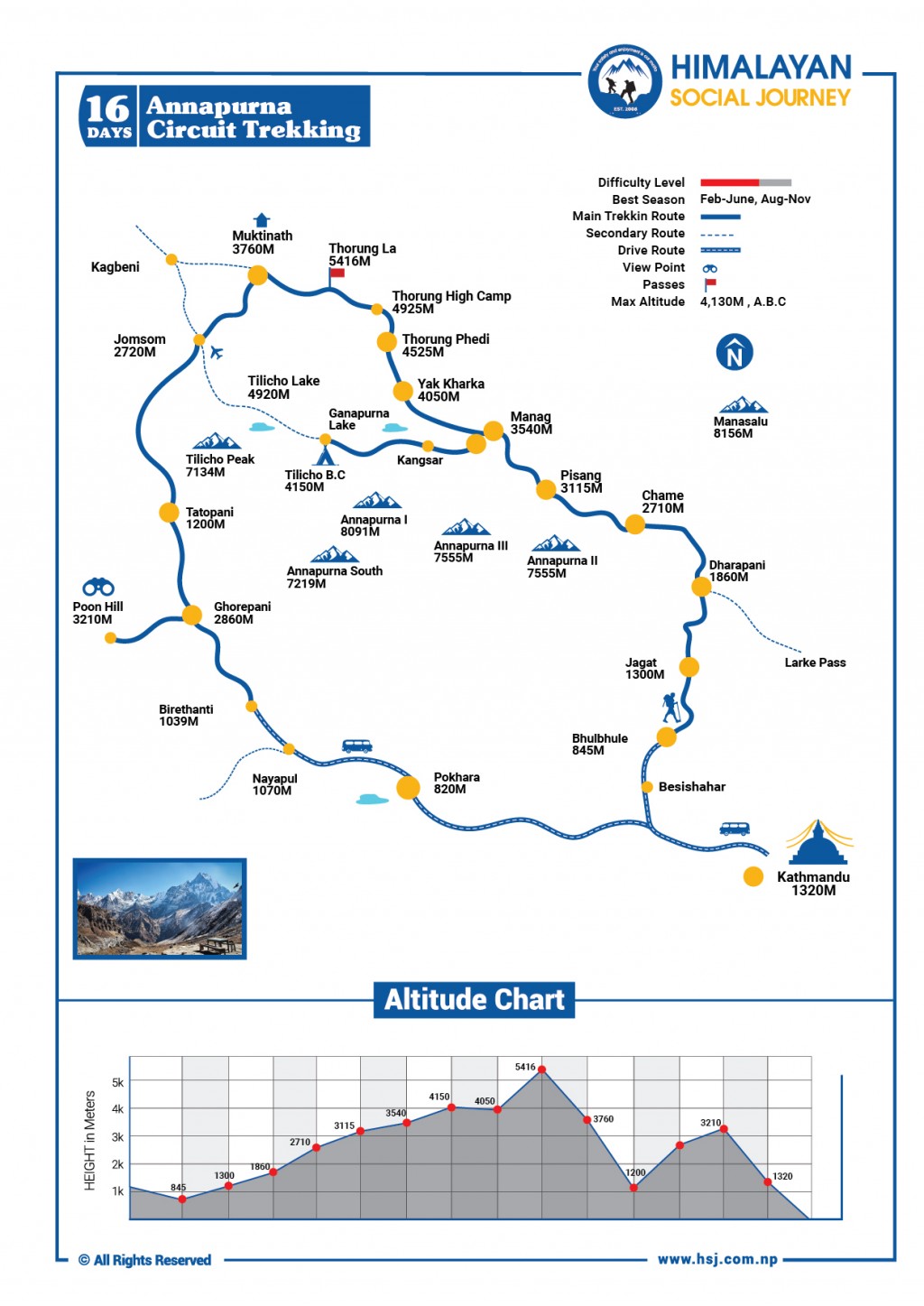
Departures Dates
| Trip Dates | Trip Costs | Actions |
|---|
Best time to trek to Annapurna Circuit
Trekking to the circuit of Annapurna is possible at any time of year. The best time for Annapurna Circuit trekking is during autumn (September, October and November). The time between mid-September and mid-November is the perfect time to go. Spring is the second best time after autumn. Spring is a season of colours. During these times, the weather and temperature conditions in the Annapurna region will remain perfectly stable.
Trekking Difficulty: Moderate
You need to have a minimal level of fitness to complete your trek. A tough trek requires an average of 6-8 hours of walking per day. In addition, you will have an altitude of about 600 m and a distance of 15-20 km.
As the Annapurna Circuit Trek is a high altitude trek, proper acclimatization and daily hydration is important. Altitude sickness is a significant threat, because even the most seasoned hikers fall victim to this disease.
The fitness program will consist of aerobic events such as running, swimming, cycling, etc. Trekkers should also eat a balanced and nutritious diet with high levels of carbohydrate and protein intake.
Accommodations And Meals In The Annapurna Circuit Trek
The Annapurna Circuit Trek is a teahouse trek like most of Nepal's treks. In general, tea houses provide a single room with twin beds. In the common room, you can charge your phones at a certain discount. Hot showers usually cost about USD 1 in teahouses. WiFi is available at a lower elevation, but you don't expect these facilities as you move up the trails.
In addition, the meals provided in the teahouses are simple and you'll get the Nepalese "Dal Bhat" meal served in most teahouses. In addition, you can also enjoy a limited variety of World cuisine including pizza , pasta, burgers, etc. You need to book these reservations early, particularly in the offseason, in order to be free from any problems.
Drinking water during the trek
Planning to have at least two liters of water when trekking every day is a smart way to start. Filling up water is quick. Taps in, out or in guesthouses mean that there are plenty of places to fill your bottles and/or your water bladders.This could be where you stay, a lunch stop, or a shared public tap used by locals. Use an efficient sterilization method to make sure your water is safe and not contaminated in anyway.Bottled water is available to buy throughout the trek, but we would advise against this for a number of reasons.You do not need them if you use sterilization method. Environment concerns are there and also buying water is expensive up in the mountains.
Connecting with your loved ones back at home while on trek
Free WiFi and charge is generally available (with some exceptions) you can find free WiFi and charge, most places charge a modest fee (e.g. Rs100-400) to use WiFi or charge; WiFi is available at Thorung Phedi and High Camp for Rs200. WiFi can be unreliable, sluggish or unusable. Be prepared to be out of touch with the world for up to a week at high altitudes.
To improve your connectivity, carry your phone to the Nepal SIM, you'll get more than you'd think (GPRS/EDGE speed).
Village electricity could be perfect during your stay. Villages above 4000 m tend to be the latter. Tea houses can have the potential to charge you either from solar sources or from a battery bank.but it is most wise to either have your own or not depend on electronic devices.
Obtaining Trekking Permits
You will need to arrange both the Trekking Information Management System (TIMS) permit and the Annapurna National Park Permit (sometimes also known as the Annapurna Conservation Area Permit). HSJ will arrange for your trekking permits.
As of 2024, the permits will require a minimum of USD $50: the ACAP Permit is USD $30 per person, while the TIMS Permit is USD $20 per person.
These will need to be checked at different checkpoints along the trek.
Make sure you also bring a minimum of 2 passport photos for your trekking permit!
List of Equipments you will need for trek
Clothing
· Trekking boots
· Short-sleeved Trekking shirts
· Trekking pants and jackets
· Thermals underwear
· Long-sleeved Trekking shirts
· Insulating down jackets
· Woolen cap
· Trekking Gloves
· Raincoats
First Aid
· Diamox tablets
· Sanitary pads / Tampons
· Anti-nausea Medicines
· Band-aids
· Mosquito and insect repellents
Toiletries
· Soap
· Toilet Paper
· Shampoo
· Sunscreen
· Moisturizer
· Hand sanitizer
Accessories
· Sunglasses
· Sleeping bag
· Cameras
· Batteries
· Water Bottle
· Solar Chargers
· Hot water Thermos
Important Documents
· Passport
· Travel Permits
Ensuring your safety
We suggest taking out an insurance plan for your individual accountability, accidents and illnesses during the service.
Regarding the type of activity, you may be asked to show a certificate of insurance for help and support, sanitation and search. This service is private and not free in Nepal, the helicopter will not take off until it is convinced to pay for the insurance.
Carrying Extra money
It’s difficult to give an exact amount of money that you should bring. Costs will vary according to how much you want to spend for shopping and where and what meals (lunch & dinner) you want to eat. Trekkers find that around $20 (for lunch & dinner) a day is reasonable for the trekking days. You would also have to pay for hot showers, Wi-Fi and charging.
As for the tips, A general rule of thumb for tipping is USD 50 - USD 80 for the guide per traveller and USD 50 for porter between two travellers if you are fully satisfied with their service. This is just a guideline and you may tip whatever / how much you think is appropriate for the services rendered which made your trek a memorable one
Luggage per one person
For the trek, we'll have one porter for two people as per group size. The porter will carry 12-15 kg per person luggage during the trek. You need to carry your daypack to keep your personal belongings such as wallet, camera, water bottle, dry snack, headlight, gadgets etc.
Single Supplementary
There will be two people accommodated in each room for the duration of the tour. If you prefer private accommodation, you'll find the option for "single supplement" of USD 250. Important: Please note that during the trek there are some lodges which won't have sufficient rooms to provide private accommodation. So, even if you purchase single supplement you will end up sharing a room for some days of the trek.
Travel and Transportation Modes
By Bus: Touring to and from city destinations is done on a private vehicle such as a car, jeep or microbus. Luxury tourist buses, which are only hired by the company for the most part, make the long distance travel. You will may have to take a public bus on some trip, but you do not need to worry about your protection or comfort because you ride with our guides and support staff in a group.
By air: Transportation by plane is available to fly from Pokhara to Kathmandu at the end of the trek. Please check includes and excludes option for your transportation options included and excluded from the price.
This Tour with HSJ
Guides and Porters
Our local Nepali team is one of the most experienced, hospitable and respected trekking outfits in Nepal. The team is fully licensed and affiliated with the Trekking Agency's Association of Nepal (TAAN), Nepal Mountaineering Association, Nepal Tourism Board, Govt. of Nepal, Sustainable Tourism Network, Himalayan Rescue Association and Kathmandu Environmental Educational Project. You will be provided with the professional and an experienced English speaking trekking guide with the good knowledge of the place and the trek. The trekking crew is skilled with the experience of over 10 years, well-trained, friendly guide and, courteous and helpful porters, assured of a wonderfully memorable experience.
For the trek, we'll have one porter for two people as per group size. The porter will carry 12-15 kg per person luggage during the trek. You need to carry your day pack to keep your personal belongings such as wallet, camera, water bottle, dry snack, headlight, gadgets, etc. The safety and concerns of our porters is our collective responsibility. We take our responsibilities towards them and their safety concerns strictly. On your part, please carry only things that are of absolute necessities.
Other Programs and services we offer with this trip
• Welcome and Farewell dinner
• Yoga Classes
• Spa services
How do we make sure you get the best experience of this trek?
We are your completely flexible travel partner. Want to follow different route? We have you covered. Have extra time in Nepal? Excellent! We have more add-on tours like Chitwan Jungle Safari, Cable Car ride to Chandragiri hills, Cooking and Yoga classes in Kathmandu and so on. Would like to customize the trip? Well, why not? Give us your ideas and we will prepare complete itinerary for you. Do you want to use different standard of accommodations than provided in the itineraries? Of course! You absolutely can. From your arrival until you departure, your wishes are our command. Feel free to make the request.
Last minute booking
It is best to book in advance but for those who cannot, for whatever reason, make a last minute reservation special arrangement for Himalayan Social Journey. In the case of last minute reservation, 100% tour payment will be approved within 24 hours. We try to operate a trek at any time but we are not liable for the delay in case of last-minute reservation, because of uncontrolled changes such as weather and the availability of accommodation.
Feedbacks
Throughout the years of business, we have always put the customers feedback as our inspiration towards making our company great travel partner. With many ups and downs, and good and not so good feedbacks we have reached where we are now. At the end of the trek, while you are with the crew during farewell dinner, we would appreciate if you give us your valuable feedback, account of good and bad experiences, recommendations and also your honest rating to our trip advisor page.
Important Information
Best time to do Annapurna Circuit Trek is during spring (March-May) and Autumn (September-November). HSJ can however organize the trek at any time of the year with absolute saftey while still availing you to have memorable experience.
This package of Annapurna circuit trek is 14 Days long. The number of days can vary depending on the routes and transportation modes, offers and packages you choose. We can also customize this trek for you to finish in lesser days if you are short in time.
Altitude: 5416m This trek requires you to walk 5-6 hours per day with a light day pack. Walking in higher altitudes is more physically demanding than walking in lower altitudes, however, the pace of the trek will vary in compensation. If you are in excellent health with average physical fitness and have strong determination, you will complete a difficult trek successfully. Exercising, particularly jogging and climbing stairs regularly for some weeks prior to your arrival is recommended to enhance your strength and fitness. Past hiking experience would be an asset, but no technical skill is required. It is slightly challenging, uphill and downhill, walking close to mountain views and walking through the beautiful mountainous forests.
While it is possible to do Annapurna Circuit Trek independently, the need of guide is misunderstood often. Guide is more than just someone that helps you with navigation, guide with knowledge of locality, way of life and also being responsible to attend to your other needs like finding you comfortable accommodation. Having a porter will help you carry your gears and belongings and you can travel at your pace while enjoying your trek. A guide can arrange for permits and TIMS for you and dealing with all other technical aspects of trekking.
It is easy and safe trek that people can do this trek independently. Indeed, it is secure and not risky trek. While there is always the possibility of avalanche because it is in mountainous areas, this is usually not dangerous. It's not a complex walk, the pitch is not rough, no tough moves, no sharp hits. That said, accidents can occur on any walk, so caution is of course required. A responsive acclimatization is important.
You will have working network connectivity in most parts of the trails. However at the higher altitude, the network may become sluggish and unreliable. The stops at the tea houses will have working connection and most of them would have Wi-Fi connectivity too. You may have to pay some extra charge for Wi-Fi connection and electricity at the higher altitude.
Global passengers will be protected by insurance when treking in Nepal. Although Nepal is normally very secure, trekking at high altitudes is physically difficult and often risky. Altitude sickness is common during hiking tours in Nepal, particularly among foreign hikers who may not have taken the right time to acclimatize. Such rescue and related emergency procedures are costly and passengers are forced to pay for these services out of their pockets, unless they are covered by insurance plans.
The break during the trek depends upon the travelers and guide. Needless to say frequent breaks are needed while ascending. Only one break is taken for the lunch. Usually travelers carry their dry snacks which they can eat while on the trek and in between the breaks. There will be break to refill the water on the way.
Yes, Himalayan Social Journey is flexible travel partner. It is possible to organize the private trip or private group trip to Annapurna Circuit Trek. The minimum people for the group is 2 however supplementary charge will be applicable for the solo traveler wanting to do private trip.
Supplementary charge will be applicable for the solo traveler wanting to do private trip. You will also have the option to share the room with another solo traveler depending on your and their consent and interest. Even if you pay supplementary charge for the single room, it is possible that during peak seasons you will end up sharing rooms due to lack of availability of the room.
In the average, you will be walking for 5-6 hours each day during the Annapurna Circuit Trek.
Insurance of the guide and porter is covered by the company. All our guides and porters are properly insured.
Yes, children are allowed to do the trek, however it is safe to not bring children under the age of 12 to do the trek as they may find it difficult and not able to walk. This could affect your trekking experience as well. The altitude is also high as they may have risk of altitude sickness.
No, there is no age limit to do the trek. If the person is healthy and physically fit, they can do the trek. We have had elderly people over 70 this trek with us and hence we can vouch that older people can do this trek as long as they do not have significant health issues.
You will have teahouse or guest house accommodation while on the trek. Tea houses can be multi-story concrete buildings with private rooms in lower elevations. The higher you step up, the simpler the accommodation is. Accommodation will involve a single dorm space in the base camp. Guide will arrange for the adequate, clean and hygienic place for you to spend overnight and you will eat at the same place you will stay in. Most of the places shall have attached bathroom and hot shower however over the higher altitude, it is likely that you may have to pay extra sum for the same.
Liquid need of body while trekking is about 4-6 liters a day (16-24 cups). Several findings suggest that drinking carbohydrate and electrolytes (such as sports drinks) in a liquid is safer than moisturizing water at altitude alone. There is also a study done on the effect of tea in reducing the fatigue and mood boosting. Results have been positive. This being said apart from water, you can drink green tea, masala tea, and ginger tea and garlic soup.
The Tap water supplied along the trails are considered safe for drinking and local people drink it without treating, however for the foreigners, it is best that the tap water be only drunk after purification. There are two good options for having proper drinking water during the trek. You can bring water purification tablets or fill your bottle for a nominal fee from the recognized and regulated "pure water" stations along the trek. As the last alternative, you can also purchase bottled water at the lodges but this is not recommended. It is very important that you drink at least 3 litres of pure water daily during the trek.
You may have to apply and obtain necessary TIMS and Permits yourself if you are trekking solo or independently. If you are hiring trekking agency or guide, this will be taken care for you.
No, the company does not provide trekking poles, you will have to manage it on your own or our guide can help you buy it when you are in Nepal. The pair of trekking poles cost from $10-$15.
Yes, we do provide sleeping bags. The sleeping bags we provide are of good quality. They help you sustain the colder climate in Nepali mountains up to -20 degree Celsius of temperature. However if you need the one of your own, you can buy one here. Your guide shall assist you to get it here. Keep the track of the weather forecast of the area and pack your clothes accordingly. This would help you be prepared for the type of weather Nepali Mountains are accustomed to.
People generally describe it as - An unforgettable trek and experience to see mountain scenery, ever-changing landscapes, breathtaking picturesque nature and memories of mankind.
With consideration to altitude and route even though Annapurna Circuit Trek is considered moderate, people find both Annapurna Base Camp and Annapurna Circuit Trek, fairly same with consideration to the grade.
On the lower regions of the Annapurna Circuit trek, the weather is generally warm. The days have an average temperature of 15 degrees Celsius. The nights are slightly colder at 7-8 degrees Celsius. The higher altitudes are colder.
FAQ's
There are three ways to get a visa for Nepal
- Visa on arrival: You can get a visa on arrival at the Tribhuvan International Airport in Kathmandu or other designated entry points. The visa fee is USD 30 for 15 days, USD 50 for 30 days, or USD 125 for 90 days.
- Online application: You can apply for a visa online through the Nepal Immigration website. https://nepaliport.immigration.gov.np .The visa fee is the same as for visa on arrival.
- Nepalese Embassy or Consulate: You can also apply for a visa at a Nepalese Embassy or Consulate in your home country. The visa fee may be different, so check with the embassy or consulate.
Visa requirements
- Passport valid for at least six months from your planned entry date into Nepal.
- Visa application form.
- Passport-sized photo (Bring 4 )
Gratis Visa (Visa for Free)
Gratis Visa is issued free of cost in case of following categories of Visa applicants:
- Children below 10 years except US citizens
- Up to 30 days for SAARC Citizen - Bangladesh , Bhutan, India , Maldives , Pakistan , Sri-Lanka (except Afghanistan) visiting Nepal for the first time in a given visa Year. Afghan citizen are eligible for Gratis Visa on Arrival only upon the recommendation of Department of Immigration. If you are an Afghan citizen, you can request concerned institution inviting you to Nepal for necessary paperwork with Department of Immigration to get you Gratis Visa 'On Arrival'.
- Non Residential Nepalese(NRN) card holder ( issued by MoFA /Nepalese diplomatic missions abroad)
- Chinese Nationals for 150 days
Nationals of following countries are requested to acquire Visa prior their arrival from their nearby Diplomatic missions (Embassies/consulates) of Nepal Government.
- NigeriaGhana
- Zimbabwe
- Swaziland
- Cameroon
- Somalia
- Liberia
- Ethiopia
- Iraq
- Palestine
- Afghanistan
- Syria
- Refugees with travel document
If your passport is not valid for at least six months, you will need to renew your passport before you travel to Nepal. You can renew your passport at your local passport office. The process of renewing your passport can take several weeks, so it is important to start the process early.
By air:
Nepal has Three international airports: Kathmandu, Bhairawa, and Pokhara. Currently, Pokhara airport does not handle international flights. However, there are a few flights to Bhairawa from few countries. The main international airport in Nepal is Tribhuvan International Airport (TIA), located in Kathmandu. You can search TIA airport to book your International flight.
By land: There are multiple land entry points along the borders of Nepal, India, and China. These entry points include Kakarvitta, Birgunj, Bhairahawa, Nepalganj, Dhangadhi, Mahendranagar, and Kerung(china boarder)
If you've booked a multiday tour or trekking package with Himalayan Social Journey, we'll pick you up from the airport. Upon arriving at Tribhuvan International Airport in Kathmandu, our representative will be there to greet you with a sign displaying your name and our company's name. We'll then take you to your pre-booked hotel.
To make the pick-up process smooth, kindly share your flight details, including flight number and arrival time. If there are any changes to your arrival plans, please inform us as soon as possible so we can arrange your pick-up accordingly. Travel with us for a hassle-free experience!
Please keep this thing in your mind that there are some airport touts and scam artists who take advantage of tourists. They might offer to carry your luggage and they want a large amount of money. Sometimes they intimidate our drivers and even take away their signs. Anyway...if you want someone to help you with your luggage you can give them NOT MORE THAN 1 - 2 DOLLARS. This is a small hassle that tourists sometimes face upon arrival at the airport. Do not stress about this but just be aware not to give more than a few dollars for their luggage handling if you choose to take someone's services. Nepalese in general are very kind and hospitable people.
The official currency of Nepal is the Nepalese rupee (NPR). Major foreign currencies such as USD, AUD, and EURO are accepted for VISA.
There are plenty of ATMs in these major cities, so you can easily withdraw cash from your foreign currency bank account. Credit cards are also accepted in some shops and restaurants, but they are not as widely accepted as cash.
On the trek, you will only need to use Nepali rupees. You can exchange your foreign currency for Nepali rupees at your hotel, money exchanges, or the airport. Himalayan Social Journey representatives will also be happy to help you exchange money.
If you have booked a trekking or multi-day tour with Himalayan Social Journey, the orientation meeting usually happens at your Kathmandu hotel around 4 or 5 pm. Our team will provide you with the specific details upon your arrival.
If you're arriving early or leaving late, please ensure to arrange extra hotel accommodations by contacting reser[email protected]. Let us know if you'll be extending your stay in Nepal, and we'll book your additional nights. Also, kindly share your flight details with us to facilitate a smooth pick-up and drop process.
When you book a trip with us, the standard accommodation arrangement is on a twin-sharing basis. This means two people will be staying in each room throughout the trip. However, if you prefer to have a room to yourself or if you're traveling alone, you can choose the "single supplement" option. By selecting this option, you'll have a private room during the trip, but please note that there will be an additional cost for the single room arrangement according to tour / trek.
For each tour date, there will be several separate groups, each with a maximum of 14 people and their own experienced English-speaking guide. During the trek, there will be a suitable number of porters available to carry your luggage. Additionally, if you prefer to do a private tour or trek with your own group, that is also possible.
Nepal has five main seasons: summer, monsoon, spring, autumn, and winter. Each season offers unique experiences and weather conditions.
Winter (Late Dec - Feb): Cold temperatures, great for festival tours and special highlights.
Spring (Mar - May): Magical rhododendron blooms, ideal for trekking and peak climbing.
Monsoon (Jun - Aug): Low season with rain, but perfect for nature lovers and discounts on hotels.
Autumn (Sep - Nov): Peak season, clear weather, and popular trekking regions fill up fast.
You can check the live weather condition via this website https://www.accuweather.com
The hotel in Kathmandu where you'll stay during the trip offers complimentary storage services. You can leave your luggage and extra clothing that you won't need for the trekking / tour. Rest assured, you can collect them once the trek and tour are over.
Don't forget to bring both TWO and THREE-pin travel adapters! If you don't have them, you can purchase them at supermarkets or electronic shops in Kathmandu. Our guide will be there to assist you if needed. You can get information about plug and voltage in below link.
Most places in Nepal are covered by mobile network providers, especially Ncell and Nepal Telecom. You can use data services for communication. You can buy a SIM card at the airport counter. There are also free and paid Wi-Fi services in most tea houses in Nepal during trek.
Here are some tips for staying connected while you are in Nepal:
- Buy a SIM card as soon as you arrive in Nepal. This will give you access to data services and allow you to make calls and send text messages.
- Check the coverage map of your mobile network provider before you travel. This will help you to know where you can expect to have good reception.
- If you are planning on visiting remote areas and need to be in connected on Internet , you may want to consider renting a satellite phone. This will give you access to communication even in areas with no mobile network coverage.
- There are many free and paid Wi-Fi hotspots in Nepal. You can find these at hotels, tea houses, restaurants, cafes, and even some temples.
If you would like to book extra activities such as Paragliding, Bungy jump, Mountain flight, Heli Tour , Bhaktapur Sightseeing many more programs. You can find updated price and program detail in this link: https://hsj.com.np/tourtype/daytours. You can book by contacting us at [email protected] For longer excursions such as Bhutan, Tibet, India, and any other treks also, we can help but please contact us immediately at [email protected]
If you have purchased a voucher from any deal company, please come in contact with us with the voucher code (redemption code) so that the voucher can be redeemed on time. Since we need time to purchase your domestic air ticket and make other arrangements, kindly confirm your spot with your suitable date at-least 2 months prior to the commencement of the tour. Your booking on a particular tour date is subject to availability of spots. You can redeem you voucher through this link too : https://hsj.com.np/voucher-redemption
A typical suggestion for tipping is to allocate around USD 50-60 for the guide and porter if you're happy with their service. However, the amount you decide to tip is entirely up to you, and you can give whatever you feel is appropriate based on the excellent service they provided during your tour / trek
Packing List for Tour:
Pack appropriate clothing for the weather conditions during your visit. Include comfortable walking shoes, a hat, sunglasses, sunscreen, and insect repellent. Don't forget essential travel documents, a camera, and any necessary medications.
Packing List for Trekking
Hiking
- Trekking Poles - 1
- Daypack - 1
- Backpack - 1
- Packcover
- Water Reservoir - 1
Sleeping
- Sleeping bag - HSJ will provide
- sleeping bag liner
Clothes
- Underwear - 3
- Socks - 3
- Bra - 3
- base Layers pant - 1
- Trekking Tshirt - 3
- Trekking Pants - 2
- Rain Pants - 1
- Hiking Shoes/ Boots - 1
- Gloves - 1
- Hat - 1
- Down Jacket - 1
- Wind Breaker - 1
- Sandles -1
Miscellaneous
- Sunglasses - 1
- Books or E-reader (optional)
Hygene/Saftey
- Microfiber towel - 1
- Toothbrush - 1
- Toothpaste - 1
- First aid kit - 1
- Medicine kit -1
- sunscreen -1
- sewing kit -1
- Soap/shampoo - 1
- Comb or brush - 1
- Period supplies - 1
- Toilet paper - 1
- sanitising gel - 1
Electronices
- Camera
- Phone
- Extranel Hardrive (optional )
- Head touch
- Power bank for charging Phone
Packing List for Climbing:
Clothing
- Trekking boots
- Short-sleeved trekking shirts
- Trekking pants and jackets
- Thermals underwear
- Long-sleeved Trekking shirts
- Insulating down jackets
- Woolen cap
- Trekking Gloves
- Raincoats
First Aid
- Diamox tablets
- Sanitary pads and tampons
- Anti-nausea Medicines
- Band-aids
- Mosquito and insect repellents
Toiletries
- Soap
- Toilet Paper
- Shampoo
- Sunscreen
- Hand sanitizer
Accessories
- Sunglasses
- Sleeping bag
- Cameras
- Batteries
- Water Bottle
- Solar Chargers
- Hot water thermos
Important Documents
- Passport
- Travel Permits
Peak climbing gears (HSJ will provide)
- Climbing Helmet: Choose a good-quality climbing helmet. Make sure your warm cap fits under your helmet.
- Climbing Boots: High-altitude, insulated, stiff-soled climbing boots.
- Crampons: C2 crampons that fit the climbing boots.
- Climbing Harness: Good-quality climbing harness.
- Ascending device or Jumar
- Descending or belay device
- Tape sling: UIAA tested a 220cm open tape sling or a 2 x 120 cm closed tape sling.
- Carabiners: 2 x lockable carabiners. 2 x non-locking carabiners
- Prusik loop: Best quality Prusik loop
- Ice ax: An ice ax with a wrist strap for climbing
If you cancel the trip for any reason, the 20% deposit amount will not be refunded. If you have paid the full trip amount and need to cancel, you will receive your money back, but a cancellation charge of 20% will still apply.
For voucher holders who purchased vouchers from deal companies, we must adhere to their cancellation policy. However, under both circumstances, we are flexible and can reschedule your trip for a later date. To cancel any trip, please make sure to provide written notification of your cancellation.
Sometimes travellers are unable to finish the scheduled trek/tour due to the various reasons or they ended up not completing the trek/tour for health or personal reasons. In this case please realize that we cannot offer you any refunds for unused days on the tour. You have to understand that our costs are the same as we have an obligation to pay our guides , porters, drivers for the time they have committed.
Our commitment is to offer you an unforgettable journey with the best services. We take our responsibilities seriously and conduct all programs in Nepal according to the rules and regulations of Nepal Goverement. If needed, we can provide alternative itineraries for a delightful holiday experience. Feel free to reach out to us if you have any questions or concerns. We're here to help!
Extra prices:
- Instant Online Booking
- Privacy Protected
- Guranteed Departure
- Group Discount Available
Let us help you decide Inquiry
Let us help you decide Inquiry

